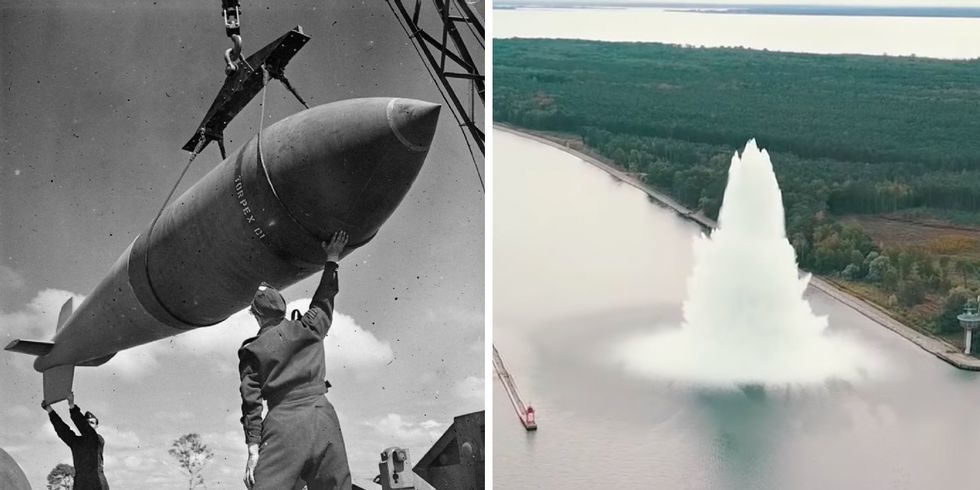 It has been a little over 75 years since the end of WWII, but some of the old explosives planted during that era are still actively being disarmed today.
It has been a little over 75 years since the end of WWII, but some of the old explosives planted during that era are still actively being disarmed today.
Take Poland, where a massive 12,000-pound bomb exploded underwater in a shipping canal near the port city Swinoujscie, not long ago on Tuesday, October 13.
The surrounding area had been evacuated of 750 civilians for the attempted disarming of the bomb, and no one was harmed during the detonation.
Bombs In WWII
The bomb, known as a Tallboy, was one of two types of the so-called “earthquake bombs,” which were the huge WWII explosives notorious for their destruction. On impact, Tallboys could make craters stretching more than 80 feet across and about 25 feet deep.
This particular bomb was 21 feet long, the biggest ever found in Poland. It was only one of a dozen bombs that failed to explode during the 1945 British raid on Nazi-occupied Swinoujscie. It had been dropped by the British Royal Air Force (RAF) on the German ship Lützow and had sunk 33 feet to the bottom of the Baltic Sea, where it would be found and handled decades later.
The operation to neutralize the Tallboy began just the day before it exploded. Divers from the Polish Navy carefully examined the underwater bomb, while others led evacuation efforts. Poland has been removing WWII weapons from its land ever since the war’s conclusion — close to 100 million pieces at more than $860 million dollars in cost, with over 4,000 losing their lives due to these lingering explosives.
However, this was the first time the Polish Ministry of Defense tried to disarm a Tallboy underwater. With the divers moved a safe distance away, the navy made a remote attempt at deflagration, or burning the explosive material without setting it off. Ultimately the bomb did go off, however, no one was injured. And now, the bomb is no longer a threat.
Sources: NY Times, BBC, MSN







